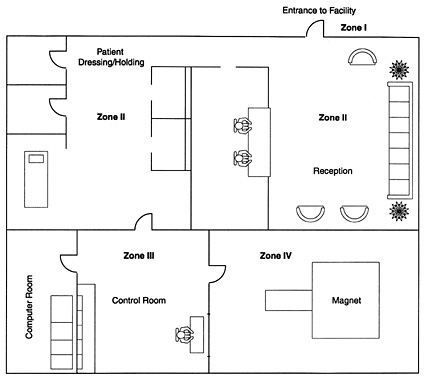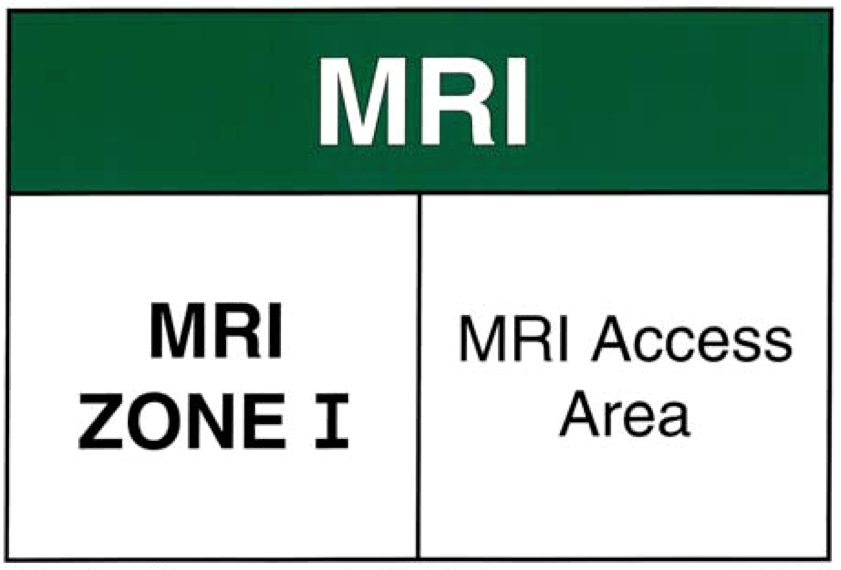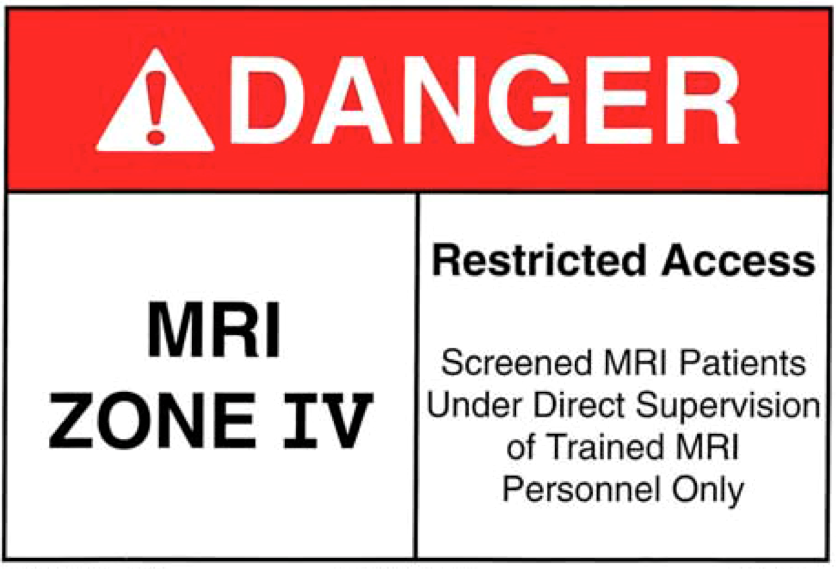|
All areas freely accessible to the general public without supervision. Magnetic fringe fields in this area are less than 5 Gauss (0.5 mT).
|
Still a public area, but the interface between unregulated Zone I and the strictly controlled Zones III and IV. MR safety screening typically occurs here under supervision.
|
An area near the magnet room where the fringe, gradient, or RF magnetic fields are sufficiently strong to present a physical hazard to unscreened patients and personnel.
|
Synonymous with the MR magnet room itself. Has the highest field (and greatest risk) and from which all ferromagnetic objects must be excluded.
|
The rationale behind the ACR's 4-zone strategy is to make it difficult for unqualified staff and unscreened patients to reach the potentially dangerous inner sanctum of the MRI Center (Zone IV). If carefully adhered to, these restrictions should minimize the risk of two major hazards of MRI — a) projectile accidents and b) injury to patients with implanted devices.
Advanced Discussion (show/hide)»
Although the ACR Zoning system has been widely adopted throughout the world, several equivalent alternative schemes exist. In the United Kingdom, the Medicines and Healthcare Products Regulatory Agency (MHRA) defines 3 areas: the MRI Controlled Access Area (≈ ACR Zone III), the MR Environment (≈ ACR Zone IV), and the MR Projectile Zone (a subset of the MR Environment within the 3 mT fringe field of the magnet). In the Netherlands, the MRI Working Group has identified 3 areas: Controlled Access Area inside scanner room where fringe field exceeds 0.5 mT, Controlled Access Area outside scanner room where fringe field exceeds 0.5 mT, and Areas Beyond Controlled Access where fringe field is less than 0.5 mT.
Reference
ACR Committee on MR Safety. ACR Manual on MR Safety. American College of Radiology, 2024. [Direct Link]
ACR Committee on MR Safety. ACR Manual on MR Safety. American College of Radiology, 2024. [Direct Link]
Related Questions
What are fringe fields and why do they matter?
What are fringe fields and why do they matter?





